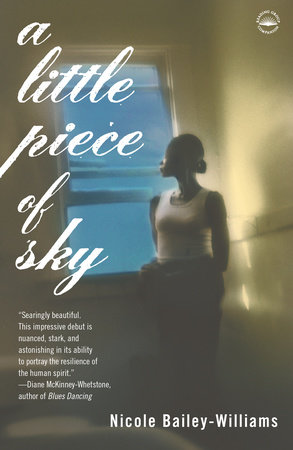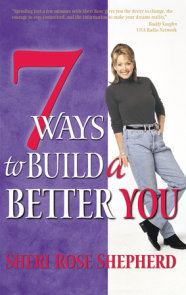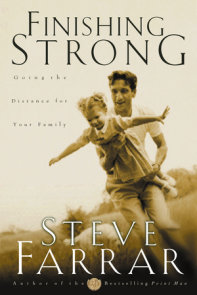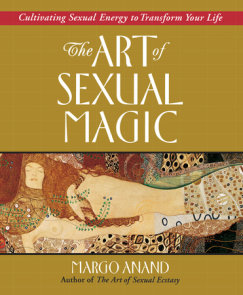TEACHING GUIDE
NOTE TO TEACHERS
Teachers: If you’d like a printable version of this guide, click on the PDF link at the bottom of this page.
A Little Piece of Sky, while written in simplistic vignettes, is filled with power. Narrated by Song Byrd, the book is divided into three parts which trace the Morning, Noon, and Evening of the protagonist’s life.
In Morning, readers meet a young Song, an African American girl roughly ten years old, growing up in a poor Latino section of North Philadelphia. She is the youngest of four children, and her voice is often silenced by her mother, who believes that as long as her basic needs are met, she has no reason to complain. Tormented by her peers and shunned by a mother who sometimes has explosive outbursts, Song finds solace with Miss Olga, a lonely neighborhood woman who accepts Song with open arms after the death of her own daughter.
In Noon, readers find Song living with her father and step-mother after her own mother’s murder. Song finds herself in the center of elite African American society, and this new environment, with its opulence, sharply contrasts the impoverished community in which she was reared. Unaccustomed to the social customs of that sector of society, Song often finds herself on edge, feeling like she has a foot in both worlds. Upon returning to her old neighborhood, she finds that she doesn’t fit in, nor does she mesh completely with her new neighborhood.
In Evening, a more confident Song is revealed. A graduate of Spelman College, Song finds that she is a player in the upwardly-mobile set of African American society. She experiences survivor’s guilt, as she is the only member of her family to survive whole. Song still struggles with the guilt that has engulfed her since her mother’s murder, but eventually, she relinquishes those feelings with the help of a therapist and the support of a good friend. Song allows herself to live fully and love fully, granting herself permission to see the full potential of who she can be. She exhales and opens her eyes to see not a little piece of sky, but the vast expanse of sky.
A Little Piece of Sky is a book about reinvention. While Song’s beginnings are humble, through self-examination and diligence, she decides what kind of future she wants. The struggle she faces of not wanting to belong to poverty and low expectations is reminiscent of the struggle faced by the protagonist of The House on Mango Street. The world Song chooses is the world described in Our Kind of People: Inside America’s Black Upper ClassBecause the protagonist is an African American girl, A Little Piece of Sky will engage African American students. Because of the infusion of Spanish throughout the text, the story will appeal to Latinos, as well. Its broader appeal arises from the notion of never feeling “good enough.” Youth is a time characterized by constant comparison (i.e. thinner than I am, prettier than I am, richer than I am). Song learns that for her, self-acceptance is supreme. She truly does not have to be accepted by anyone but herself. A Little Piece of Sky invites empathy, then empowerment not only for Song but for readers as well. This message is universal.
.
TEACHING IDEAS
I. Preparing to read
The following questions are designed to assess comprehension, to provoke thought, and to arouse class discussion. Students should be encouraged to journal as they read A Little Piece of Sky. Recording their responses and questions will aid in comprehension. In addition, journaling can provide wonderful opportunity for self-reflection, as the students think about their own lives, their own families, their own conflicts, and their own reactions to conflicts.
II. Language: image and metaphor
1. Throughout the book, the author uses metaphor to describe skin color (i.e. [My Outer Self] "the skin I’m in is dark brown like a coffee bean," [My Tired Mother] "rings set in smooth skin the color of Georgia earth," [My Friend] "pulling honey-colored Sloane to him in an embrace," and [Return to the Judge’s House] "I had been dropped into the vortex of a vanilla cyclone.") What is she saying about skin color and acceptability in society?
2. In "My Inner Self," Song describes her eyes as being "like burnt coal" and like "the same [night sky] that the slaves must have seen through the cracks from the belly of the drifting beast." What are the connotations of these similes and what do they tell us about Song?
3. The author makes several allusions to the sky (i.e. [When My Mother Goes] "From where I stand in the center of the bathroom, directly under the skylight, I can only see a little piece of sky. Even though it’s small, I stare up and up, and I forget about the roaches and the lights and the water.). What does the sky represent for Song? Where else do readers see the sky holding the same meaning for her?
4. Using your knowledge of the symbol of the color blue (i.e. Blues music and language [I’m feeling blue.]), describe how Song reshapes the color blue for herself throughout the book.
5. In "Saturday," the author likens getting a hair relaxer to the quashing of a revolution. Describe the "war" that Song fights with her hair.
6. In "Miss Olga’s Friend," readers learn the story of Linda. Her husband’s substitution of angel hair with meat sauce for beans and rice marks a turning point for her. Metaphorically speaking, what did she want?
7. In "Mi Familia," readers are introduced to Song’s family. In "Mi Padre," readers learn more about their lineage. The author uses naming as symbolism. How do the names reflect the personalities of Song and her siblings? How is the symbolic naming employed again in "Epilogue"?
III. Theme
1. Bailey-Williams incorporates Sophocles’ play Oedipus throughout the book. She tells of Song’s foremothers’ running away in search of better lives, Song’s mother’s running away from her problems, and Sojourn’s never staying in one place. Why is it important for Song to re-invent the story for her own children?
2. In "Two Worlds," Song contrasts life in her former setting with life in her current setting. How does she feel about the two environments? Does she experience comfort in both worlds?
3. How would Song’s story be different if she were lighter?
4. What do Miss Olga’s Ocho Orders tell readers about Song’s self-esteem?
5. Song has a fear of being successful, as indicated in "Miss Olga’s Advice." Why might she feel as if she is forfeiting something if she pursues success and happiness?
DISCUSSION AND WRITING
Comprehension Questions for in class discussions
1. Trace the path that led Song’s family to Philadelphia.(page 3)
2. How does Song’s mother arrive in North Philadelphia? (page 4)
3. What were the circumstances of Song’s birth? (page 6)
4. What does Song look like? (page 7)
5. How does her appearance contrast with the appearance of her peers? (pages 7&9)
6. Who are the members of her family? (page 10)
7. Do they all live with her? (page 10)
8. How does Song’s mother begin her day? (page 12)
9. What’s different about Song’s back? (page 14)
10. How does Caramia try to cope with her problems? (page 18)
11. Who is Miss Olga? (page 19)
12. Where is Miss Olga’s family? (page 20)
13. What does Ms. Byrd do to Song when she goes out? (page 22)
14. While Song is there, what gives her hope? (page 23)
15. How old is Song in Morning? (page 25)
16. List the six reasons why Song is angry. (page 24)
17. How does Song feel about her back? (page 27)
18. What does Miss Olga do for Song that makes her feel better? (pages 29 & 30)
19. What does Song hear the first time when her mother rushes hurriedly into the house? (page 32)
20. In "A Happy Day," Song expresses a hint of happiness about her skin. On what is this happiness based? (page 36)
21. Why don’t Ms. Byrd and her brother speak any more? (page 38)
22. List some of the ways that Caramia supports her habit.(pages 40 & 41)
23. How many place settings does Miss Olga have? Why? (page 42)
24. Why does Song feel like she kills her mother? (page 45)
25. Who actually kills Ms. Byrd? (page 45)
26. What does "Azul" reveal about the way Ms. Byrd treated Song? (page 48)
27. In "Azul," who is Billie? (page 48)
28. How are things different at Song’s father’s house? (page 51)
29. What physical characteristic does Song have in common with her father?(page 54)
30. How does Song feel about her new school? (page 55)
31. Why doesn’t Song explain her feelings to Miss Turner? (page 57)
32. Why does the man in "My Friend" treat Song and Sloane differently? (page 60)
33. How does Song feel returning to Miss Olga’s house? (page 62)
34. How is Song different from Freeman? (page 63)
35. Based on "I Thought," describe how Song is reconfiguring her view of her mother. (page 65)
36. Why is Song upset that Romy wants to go to North Philadelphia? (page 69)
37. How does Miss Olga regard baby Maria’s coming to live with her? (page 73)
38. Who sentences Freeman? (page 75)
39. Based on "Mi Padre," how does Song again re-think her opinion of her mother? (page 80)
40. How did Song’s parents meet? (page 79)
41. Why does Song feel like she is related to Oedipus? (pages 81 & 82)
42. What does "Azul II" reveal about Song’s changing view of her life? (page 86)
43. How does "Saturday" reveal the beginnings of change in Song’s attitude about her hair? (pages 89 & 94)
44. How does Song fulfill her silent promise to Miss Olga? (page 90)
45. For what had Song been hoping from her meeting with Freeman? (page 95)
46. In "The Barber Shop," how does Song find resolution with her hair? (page 98)
47. Why is Song reluctant to let anyone know that she wants to see a therapist? (page 100)
48. Does Maria initially know who Caramia is? (page 100)
49. Why does Caramia come to Miss Olga’s house? (page 103)
50. Why does Maria’s lecture to Caramia surprise Song and Miss Olga? (page 103)
51. Why does Song feel uncomfortable at the ball?(page 108)
52. At the end of "The Ball," why does she almost look up? (page 111)
53. Why does Miss Olga dislike her friend Linda’s husband? (page 115)
54. Why was Song tempted to run over the Judge? (page 121)
55. Why does Song feel like she’s lived in two different worlds? (page 126)
56. Why is Song ashamed to see Freeman? (pages 131 & 132)
57. Why does Song feel uncomfortable at Tyler Marsh’s soiree? (pages 139 & 140)
58. What does Ms. Byrd try to give Song in her dream? (page 147)
59. Why does Song re-create the story of Oedipus for her children? (pages 152 & 153)
60. What does "Azul III" tell about Song’s outlook on life? (page 155)
OTHER TITLES OF INTEREST
I Know Why the Caged Bird Sings by Maya Angelou
The House on Mango Street by Sandra Cisneros
Ellen Foster by Kaye Gibbons
The Bluest Eye by Toni Morrison
When I Was Puerto Rican by Esmeralda Santiago
The Plays of Sophocles
ABOUT THIS GUIDE
This guide was written by the author, Nicole Bailey-Williams. She is a high school English teacher with the Ewing Township Board of Education, where she has taught for eight years. Prior to that, she taught English and French at the Woodlynde School in Strafford, PA. She has served as a lecturer at Pennsylvania State University and she has participated in panels on writing fiction at the University of Pennsylvania, Spelman College, Paige College, and Cheyney University.
Mrs. Bailey-Williams received her BA in English in 1993 from Hampton University, where she authored a cun laude thesis entitled "The Grotesque in Toni Morrison’s Beloved and The Bluest Eye." She earned her Master of Education degree from Temple University in 1995. She has participated in and conducted numerous professional development workshops, and she was selected to participate in Princeton University’s seminar in African American Studies, where she studied under Arthur Ashe and Langston Hughes biographer Arnold Rampersad. Her work in education has been noted by many organizations and institutions including Princeton University and the National Association of University Women.
In addition to her educational pursuits, she is the co-host of "The Literary Review," a book review show which airs on WDAS (1480 AM) in the Philadelphia area. She is also a freelance writer who has penned articles for Black Issues Book Review, Publishers Weekly, and QBR (Quarterly Black Review). In addition, she was a contributing writer for Notable Black American Men (Gale), Gumbo: A Celebration of African American Writing (Harlem Moon), and Proverbs for the People. Mrs. Bailey-Williams was born in Philadelphia and raised in the neighboring suburb of Elkins Park. She currently resides in Mercer County with her husband Gregory.
×
Become a Member
Just for joining you’ll get personalized recommendations on your dashboard daily and features only for members.
Find Out More Join Now Sign In





















